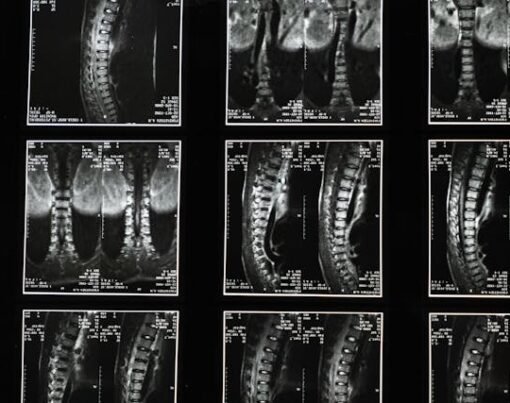Have you ever found yourself in a situation where someone needed help, and you didn’t know what to do? It could be a friend, a family member, or even a stranger on the street. Consider the difference it would make if you had the knowledge and skills to step in and provide immediate assistance.
That’s where the first aid course comes in. In this article, you will learn the lifesaving impact of understanding the importance of first aid courses.
Table of Contents
Immediate Action Saves Lives
Picture this: someone suddenly collapses, gasping for breath. Before professional help arrives, your immediate actions can be the difference between life and death in those crucial minutes. First aid training equips you with the knowledge to assess the situation, perform CPR, and stabilize the person until help arrives.
Understanding the ABCs – Airway, Breathing, Circulation
First aid can seem overwhelming in a crisis, yet the ABCs—Airway, Breathing, and Circulation—are its foundation. These three essentials guide you through the early moments of an emergency. Let’s examine each part’s simplicity and importance in life preservation.
1. Clearing the Airway
The first is Airway, the ‘A’ in ABC. Step one in treating a collapsed person is clearing their airway. This entails looking for blockages, tilting the head back to free the airway, and removing food and other items. Unobstructed airways allow oxygen, life’s essence, to flow.
2. The Life Rhythm: Breathing
Following the airway, we take ‘B’ for breathing. Breathing assessment is crucial after airway security. Check sight, sound, and breath.
Are they breathing normally? Any odd noises or issues? Rescue breaths will be taught if not. Intervening can save a life in crises, where every breath counts.
3. Maintaining Heartbeat: Circulation
C for Circulation completes ABC. Taking a pulse and measuring blood circulation. Blood oxygen doesn’t reach crucial organs if the heart isn’t pounding well. In the first aid course, you learn to find a pulse, determine its regularity and do chest compressions. Keeping circulation going is key to preventing harm and surviving.
Rapid Response to Accidents
Accidents happen when we least expect them. Whether it’s a car crash, a fall, or a sudden injury, your ability to provide immediate first aid can significantly impact the outcome. From controlling bleeding to immobilizing fractures, the first aid course prepares you to act swiftly and effectively.
Essential Skills for Common Injuries
Imagine encountering someone with a deep cut or a burn. First aid course arms you with essential skills to address common injuries. You’ll know how to clean and dress wounds, administer pain relief, and provide comfort in distressing situations.
Children and First Aid
As curious as they are, children are more likely to have mishaps. The first aid course becomes crucial here. Here’s why first aid course is crucial for children’s well-being and how recognizing their requirements can prevent additional injury.
Knowing Kids’ Vulnerabilities
Children are more susceptible to accidents and injuries during development. Falls, burns, wounds, and other accidents are common because of their tiny size, poor coordination, and curiosity. You may recognize these weaknesses and personalize your approach to a distressed youngster with a first aid course.
Common Childhood Injuries
Various activities can cause bumps, bruises, and scratches in children. A first aid course helps you treat these problems quickly. You become a trusted support since you clean and bandage wounds and console accident victims.
Choking and Foreign Object Removal
Choking is a major worry for young children who may explore the world by putting objects in their mouths. A first aid course helps you respond quickly and effectively to choking children. How to do the Heimlich maneuver to remove a foreign item and clear the airway.
Kid-Friendly CPR
CPR is a lifesaving skill, and youngsters need special approaches. A first aid course teaches child-friendly CPR due to their smaller bodies and unique physiology.
Dealing with Allergic Reactions
Allergic responses can be life-threatening for children, who may be especially vulnerable to them. A first aid course includes understanding allergic symptoms and administering epinephrine for anaphylaxis.
Recognizing Abuse or Neglect
A first aid course goes beyond physical injuries to include identifying symptoms of abuse or neglect. Knowing these indicators is crucial for their safety as someone who works with kids.
Appropriate Medication Administration
The first aid course emphasizes kid medication safety and prevents overdosing. Children’s caregivers need this information.
Becoming a Pillar in Your Community
What if your neighbor suddenly has a heart attack? In close-knit communities, being the person who can step in during emergencies builds trust and camaraderie. A first aid course makes you an asset to your community and fosters a sense of responsibility.
Addressing Mental Health
People often think of bandages and CPR when they think of first aid. First aid treats mental health issues as well as physical injuries. Here’s how the first aid course has expanded to include mental health emergencies.
Recognizing Mental Health Emergencies
The initial stage in mental health first aid is identifying indications of a crisis. This could include acute anxiety, panic attacks, withdrawal, or suicidal thoughts. A first aid course helps recognize these indications, emphasizing mental health emergency early action.
Active Listening and Empathy
Effective communication is key to mental health first aid. First-aid training fosters empathy and active listening. Understanding how to provide a secure, nonjudgmental environment for mental health crises is vital. Sometimes, listening compassionately is the first step to mending.
Deescalation Methods
Mental health crises can escalate quickly, and de-escalation is crucial. The first aid course teaches calm, defuse, and avert a crisis. This is useful when expert help is delayed.
Understanding Mental Health Problems
Understanding common mental health problems is crucial for mental health first aid. First aid training covers anxiety, depression, bipolar disorder, and schizophrenia. This understanding enables empathy and customized support.
Reassurance and Support
In a mental health crisis, reassurance and support can be crucial. First aid training gives reassurance, understanding, and practical support. These behaviors can foster security and stability.
Connecting to Professional Help
Linking individuals to expert treatment is crucial, even if first aid provides immediate support. First aid training covers connecting with a mental health expert, helpline, or hospital.
Addressing Self-Harm and Suicidal Ideation
Addressing these issues is crucial in mental health first aid. First aid training allows you to recognize risk, encourage communication, and take safety measures. Understanding emergency situations is part of this.
Preventing Small Issues from Becoming Big Problems
Minor injuries and illnesses can quickly escalate if not properly addressed. First aid course teaches you to recognize the early signs of trouble and intervene before a situation worsens, preventing small issues from becoming big problems.
Be Confident in the Face of Crisis
Perhaps one of the most significant impacts of a first aid course is its confidence boost. Knowing that you have the skills to take control of a crisis can make a world of difference. Confidence is contagious – your calm demeanor can reassure those around you and positively influence the outcome.










